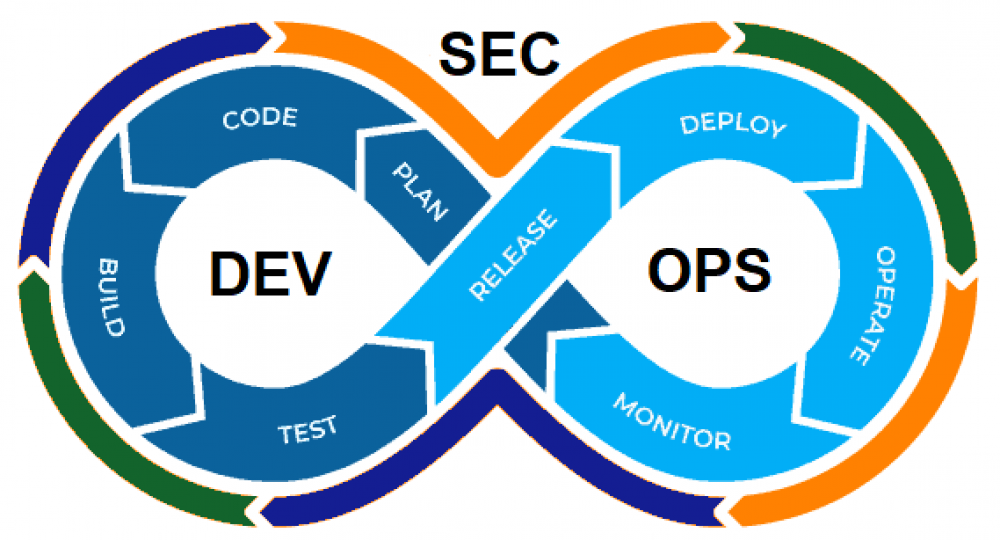
Things to note about DevSecOps
Things to Note About DevSecOps
The majority of those in the IT and software industries are familiar with DevOps and its framework for integrating development and operations. DevOps has evolved into a standard for ensuring continuous software deployment in response to customer needs. However, the process is not limited to development and operations. Security must be considered as well. As a result, when it is combined with the other two, we now have DevSecOps.
What Is DevSecOps?
To summarize, DevSecOps combines development, security, and operations. The mindset is founded on the principle of security by design. Security must be a primary consideration during the development of software, not an afterthought.
For organizations currently using a DevOps framework, the time has come to transition to DevSecOps. This may entail reorganizing your team to include security experts. The reality is that your code will contain security vulnerabilities. The question is, are you more likely to discover it sooner rather than later? Naturally, sooner, and it is at this point that you will need to initiate continuous security (CS) provisions.
What Is Continuous Security?
Continuous security (CS) is the process of addressing security concerns and incorporating testing into your continuous integration and deployment pipelines. You're integrating automated security checks that have the potential to accomplish two things. To begin, it can alert developers to potential code vulnerabilities and monitor for them in the future.
Continuous security encompasses the entire lifecycle of the product, which means it should be considered prior to writing any code. Then it iterates the product to ensure that security risks are continually assessed.
Benefits of DevSecOps
Benefiting from DevSecOps is relatively straightforward due to the services it provides. It automates the entire software delivery pipeline. You significantly reduce risk, eliminate errors, and avoid downtime. With the right tools and talent, it's not difficult to deploy, and any organization should have no difficulty adopting it.
Why Do You Need DevSecOps?
You can consider the advantages, which certainly answers the question. DevSecOps, on the other hand, is more than a "need." Rather than that, it is a requirement for any product development team. Consider the cybersecurity landscape, which is undergoing rapid evolution. Cyber-attacks have advanced far beyond what most could have imagined a decade ago.
Finally, DevSecOps unifies all major stakeholders. It prioritizes security over everything else, not something you'll figure out later. It also ensures scalability and compliance with the deployment of your product. Without it, security will deteriorate.
The DevSecOps Workflow
Therefore, if you're establishing a DevSecOps framework, how exactly do the workflows look? Here is an illustration:
- Early collaboration: Before work begins, team members meet to discuss security. They discuss threat models, functional vs. non-functional security requirements, and the likelihood of security compromising a design element.
- Coders begin work on a new product or iteration. The programmer may use both open source and proprietary code.
- Code scanning: Security professionals leverage DevSecOps tools to automate code scanning for vulnerabilities, bugs, and errors.
- Updates and changes: This step involves the remediation of the code.
- Additional testing: The product is then deployed and tested, including the back-end, integrations, security tests, and APIs.
- Pass or fail: If the application passes the tests, it is prepared for real-world deployment. If not, it reverts to remediation.
- Continuous monitoring: Following deployment, the application is constantly monitored for new threats.
DevSecOps Best Practices
When forming your DevSecOps team, there are some industry-standard best practices that you should follow.
- Establish a standardized set of coding practices: Without consensus, your scanning tools will miss code errors.
- Go all-in on security: While DevOps is predicated on collaboration, there is a disconnect if security remains isolated. Security must be included in the circle and have leadership support.
- Embrace automation: If you want security to keep pace with development and operations, automation is necessary. The more automation you can achieve, the faster you can deploy while maintaining peace of mind.
- Integrate penetration testing: Penetration testing is a distinct strategy that you should employ. Pen testing is an excellent method for identifying vulnerabilities at the code level early on.
- Develop a culture, not a "job": DevSecOps, like DevOps, is not a job. If you do not deeply embed it in the foundation, you will face obstacles that will prevent you from achieving your software development goals. If you want this to be the culture of your organization, it must permeate it from the top down.

